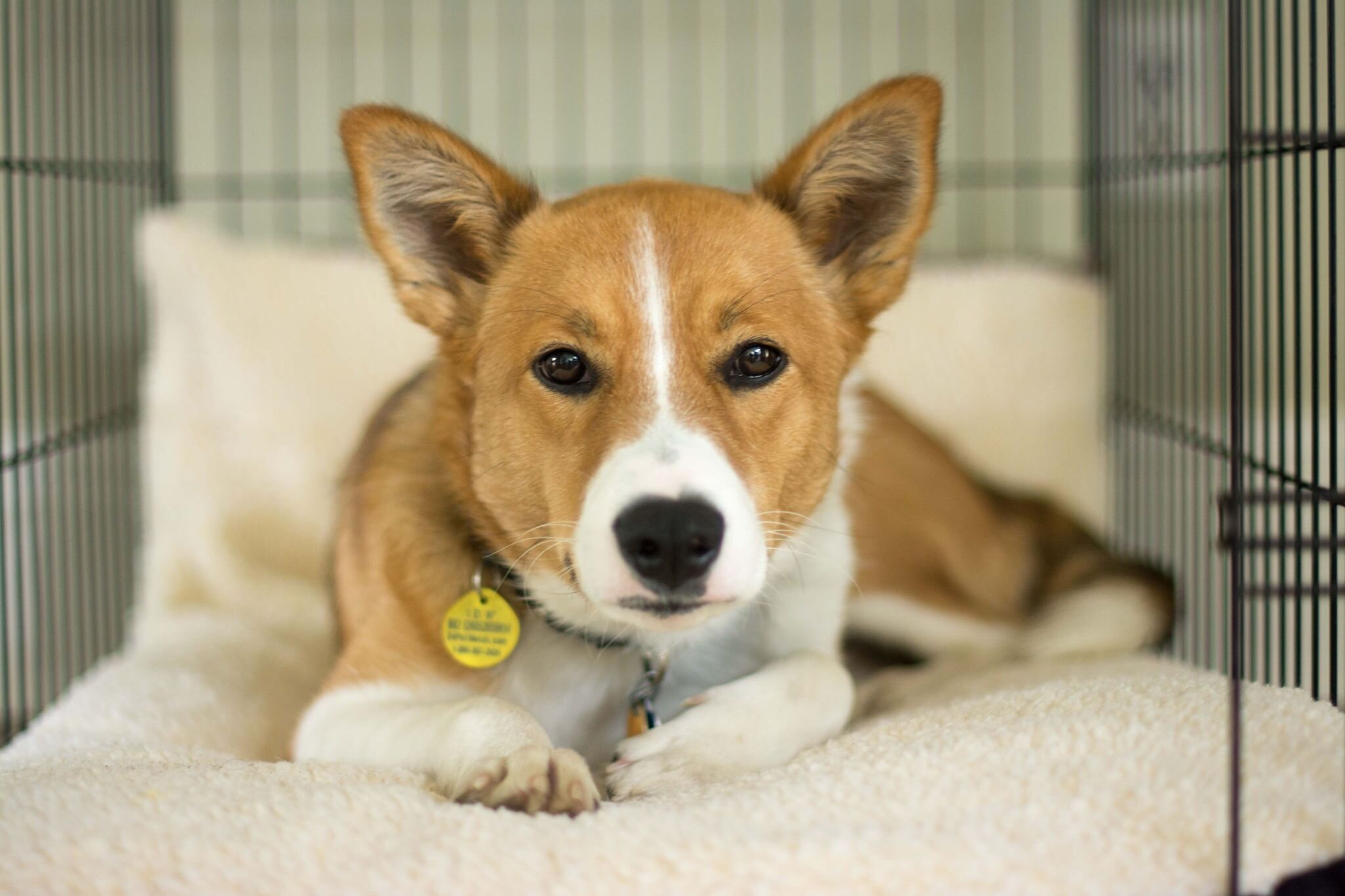⭐️ Crate Training Top Tips: Muddy Paws Rescue

Let’s talk about crate training.
While it’s true that some pups will come fully crate-trained, most will take time to get used to the crate (after all, it’s called crate training for a reason!). Many dogs will frequently bark, whine, or cry when they’re adjusting to their new habitat. This can certainly be overwhelming for new fosters, so we’ve put together a list of tips to turn to when crate training.

Crate your pup any time you have to leave the home or cannot provide direct supervision. This includes during your bedtime.
Crates should be just large enough that a pup can comfortably stand up, turn around, and lie down inside of it. If the crate is any larger, the dog may begin to use the bathroom on one end of the crate and rest on the other, which will hamper housetraining.
Set up the crate to be a comfortable place that your dog enjoys being in! Provide comfortable bedding, toys, even a long-lasting chew treat. The crate should never be used as a method of punishment - instead, the crate should be the pup’s personal space where they can go to relax and calm down.
Open the crate’s door during the day while you’re home and supervising the pup so as to encourage them to come and go inside it as they please.
Bring the crate into your bedroom so the dog can see you while they’re learning to fall asleep in the crate. Having you in their presence as they drift into their pup slumber will set the tone for calm bedtime behavior going forward.
Cover the crate with a blanket so it’s dark and cozy for the pup. Just like us, they like the feeling of being in a safe, quiet den!
Feed your dog’s meals in the crate so they associate crate time with yum time. This will incentivize them to independently enter the crate in the future. You can also give your pup their favorite treat (like a peanut butter stuffed Kong!) in the crate to associate crate time with a definitive reward.
Expect your dog to whine or bark when left in the crate initially. This is very common and usually subsides after 5-30 minutes. As dogs get more familiar with the crate and with your own routine, this will happen less frequently and then likely disappear altogether. It is very important that you ignore the dogs when they whine or bark in the crate, as giving them any sort of attention while they do this can reinforce the behavior. (Note: This differs from whining/barking inside the crate after the dog has already been in there for a while, which may signify that they need to use the bathroom.)
Let your neighbors know that you have a new foster dog and that there may be some crying at night - most will be more impressed by your good deed than bothered by the noise!
Download DogMonitor, an app that turns your computer camera into a doggy cam that you can livestream on your phone while you’re out. Most pups will only bark for about 20 minutes, but having 24/7 access to them will surely bring you peace of mind.
Looking for a specific step-by-step progression of crate training? See here.
Have more questions about fostering? Check out our Foster FAQs.
